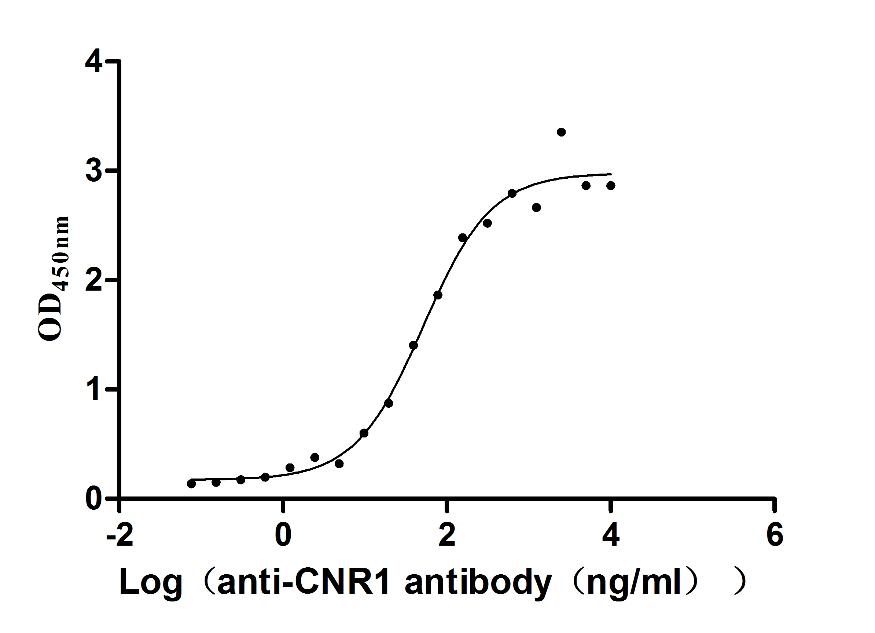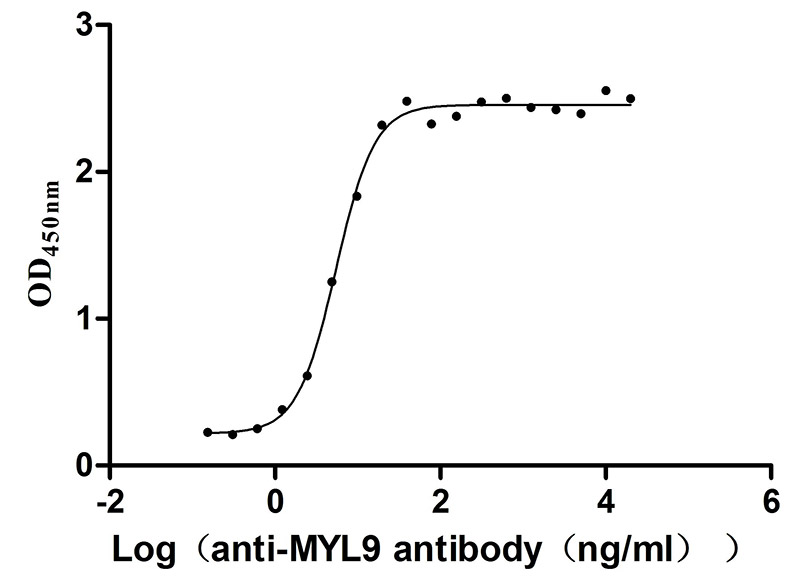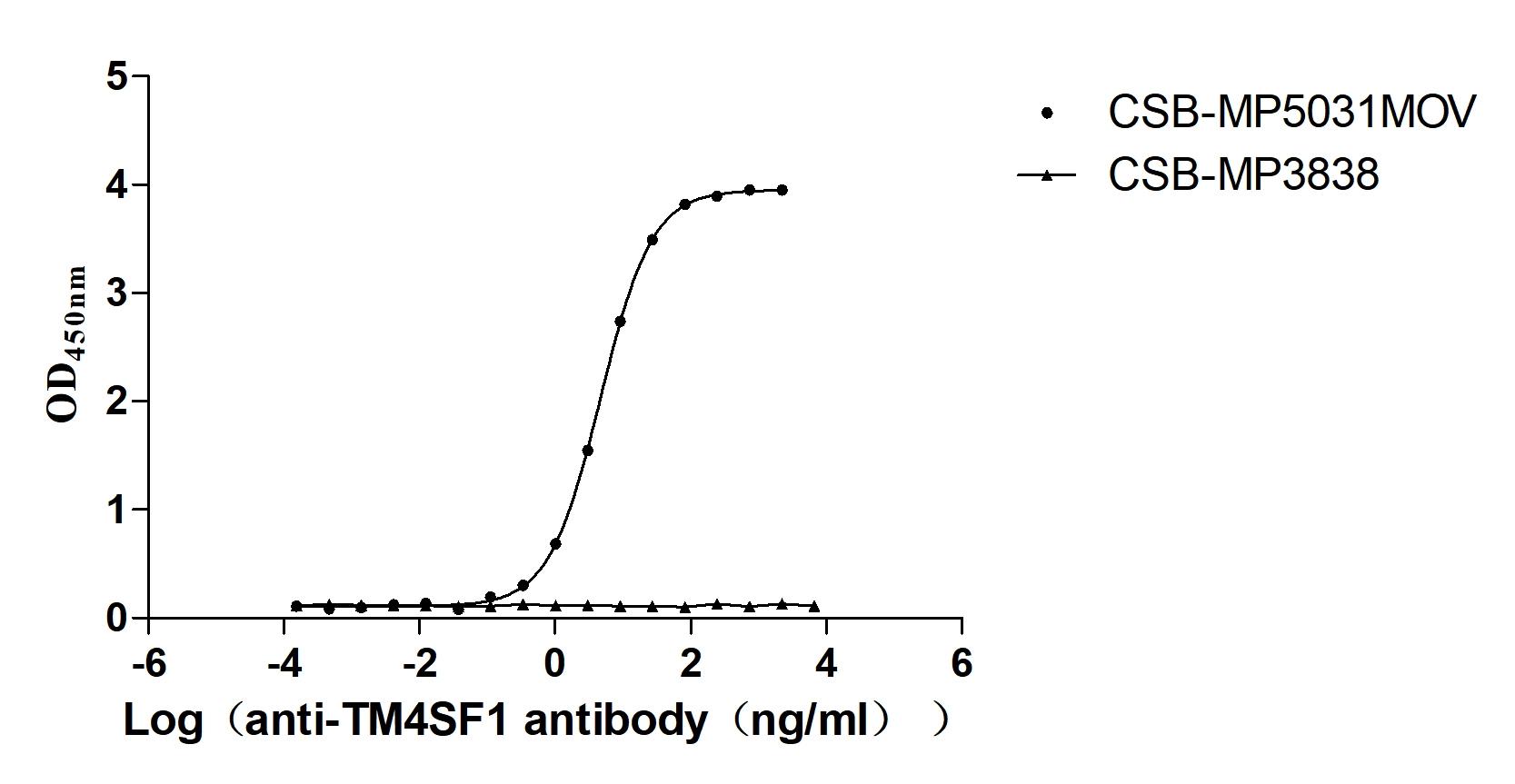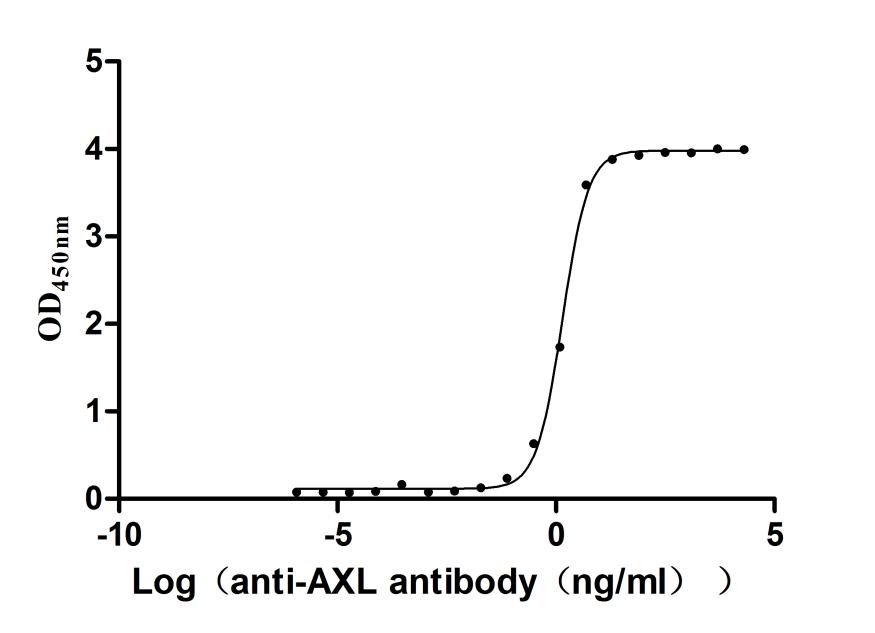Recombinant Mouse Matrix-remodeling-associated protein 8 (Mxra8), partial
-
中文名稱:小鼠Mxra8重組蛋白
-
貨號:CSB-YP875277MO
-
規(guī)格:
-
來源:Yeast
-
其他:
-
中文名稱:小鼠Mxra8重組蛋白
-
貨號:CSB-EP875277MO
-
規(guī)格:
-
來源:E.coli
-
其他:
-
中文名稱:小鼠Mxra8重組蛋白
-
貨號:CSB-EP875277MO-B
-
規(guī)格:
-
來源:E.coli
-
共軛:Avi-tag Biotinylated
E. coli biotin ligase (BirA) is highly specific in covalently attaching biotin to the 15 amino acid AviTag peptide. This recombinant protein was biotinylated in vivo by AviTag-BirA technology, which method is BriA catalyzes amide linkage between the biotin and the specific lysine of the AviTag.
-
其他:
-
中文名稱:小鼠Mxra8重組蛋白
-
貨號:CSB-BP875277MO
-
規(guī)格:
-
來源:Baculovirus
-
其他:
-
中文名稱:小鼠Mxra8重組蛋白
-
貨號:CSB-MP875277MO
-
規(guī)格:
-
來源:Mammalian cell
-
其他:
產(chǎn)品詳情
-
純度:>85% (SDS-PAGE)
-
基因名:Mxra8
-
Uniprot No.:
-
別名:Mxra8; Asp3; Dicam; Matrix remodeling-associated protein 8; Adipocyte-specific protein 3; Dual Ig domain-containing cell adhesion molecule; DICAM; Limitrin
-
種屬:Mus musculus (Mouse)
-
蛋白長度:Partial
-
蛋白標(biāo)簽:Tag?type?will?be?determined?during?the?manufacturing?process.
The tag type will be determined during production process. If you have specified tag type, please tell us and we will develop the specified tag preferentially. -
產(chǎn)品提供形式:Lyophilized powder
Note: We will preferentially ship the format that we have in stock, however, if you have any special requirement for the format, please remark your requirement when placing the order, we will prepare according to your demand. -
復(fù)溶:We recommend that this vial be briefly centrifuged prior to opening to bring the contents to the bottom. Please reconstitute protein in deionized sterile water to a concentration of 0.1-1.0 mg/mL.We recommend to add 5-50% of glycerol (final concentration) and aliquot for long-term storage at -20℃/-80℃. Our default final concentration of glycerol is 50%. Customers could use it as reference.
-
儲存條件:Store at -20°C/-80°C upon receipt, aliquoting is necessary for mutiple use. Avoid repeated freeze-thaw cycles.
-
保質(zhì)期:The shelf life is related to many factors, storage state, buffer ingredients, storage temperature and the stability of the protein itself.
Generally, the shelf life of liquid form is 6 months at -20°C/-80°C. The shelf life of lyophilized form is 12 months at -20°C/-80°C. -
貨期:Delivery time may differ from different purchasing way or location, please kindly consult your local distributors for specific delivery time.Note: All of our proteins are default shipped with normal blue ice packs, if you request to ship with dry ice, please communicate with us in advance and extra fees will be charged.
-
注意事項:Repeated freezing and thawing is not recommended. Store working aliquots at 4°C for up to one week.
-
Datasheet :Please contact us to get it.
靶點詳情
-
功能:Transmembrane protein which can modulate activity of various signaling pathways, probably via binding to integrin ITGAV:ITGB3. Mediates heterophilic cell-cell interactions in vitro. Inhibits osteoclastogenesis downstream of TNFSF11/RANKL and CSF1, where it may function by attenuating signaling via integrin ITGB3 and MAP kinase p38. Plays a role in cartilage formation where it promotes proliferation and maturation of growth plate chondrocytes. Stimulates formation of primary cilia in chondrocytes. Enhances expression of genes involved in the hedgehog signaling pathway in chondrocytes, including the hedgehog signaling molecule IHH; may also promote signaling via the PTHLH/PTHrP pathway. Plays a role in angiogenesis where it suppresses migration of endothelial cells and also promotes their apoptosis. Inhibits VEGF-induced activation of AKT and p38 MAP kinase in endothelial cells. Also inhibits VTN (vitronectin)-mediated integrin ITGAV:ITGB3 signaling and activation of PTK2/FAK. May play a role in the maturation and maintenance of the blood-brain barrier.
-
基因功能參考文獻:
- Mxra8 bound directly to chikungunya virus particles and enhanced virus attachment and internalization into cells PMID: 29769725
- These results indicate that DICAM acts as a negative regulator of osteoclast differentiation by suppressing the integrin alphaVbeta3 pathway.[DICAM] PMID: 22492581
- DICAM suppressed angiogenesis by attenuating AKT and p38 MAP kinase signalling. PMID: 23386276
- Results indicate that DICAM, a novel dual Ig domain containing adhesion molecule, mediates cell adhesion via alphavbeta3 integrin. PMID: 18366072
- new member of the transmembrane-type immunoglobulin superfamily and designated limitrin, localizing selectively to glia limitans in mouse brain PMID: 14603461
顯示更多
收起更多
-
亞細胞定位:Cell membrane; Single-pass type I membrane protein. Cell junction, tight junction. Cytoplasm. Cell projection, cilium membrane. Nucleus.
-
組織特異性:Widely expressed (at protein level). Highly expressed in brain where it localizes to the glia limitans, which is formed by the endfeet of astrocytes surrounding capillaries, and beneath the pia mater (at protein level). In lung, detected in epithelial cel
-
數(shù)據(jù)庫鏈接:
Most popular with customers
-
Recombinant Rat Intestinal-type alkaline phosphatase 1 (Alpi) (Active)
Express system: Mammalian cell
Species: Rattus norvegicus (Rat)
-
Recombinant Human Cannabinoid receptor 1 (CNR1)-VLPs (Active)
Express system: Mammalian cell
Species: Homo sapiens (Human)
-
Recombinant Human Dickkopf-related protein 1 (DKK1) (Active)
Express system: Mammalian cell
Species: Homo sapiens (Human)
-
Recombinant Human Myosin regulatory light polypeptide 9 (MYL9) (Active)
Express system: Yeast
Species: Homo sapiens (Human)
-
Recombinant Human Killer cell immunoglobulin-like receptor 3DL2 (KIR3DL2), partial (Active)
Express system: Mammalian cell
Species: Homo sapiens (Human)
-
Recombinant Macaca fascicularis Transmembrane 4 L6 family member 1 (TM4SF1)-VLPs (Active)
Express system: Mammalian cell
Species: Macaca fascicularis (Crab-eating macaque) (Cynomolgus monkey)
-
Recombinant Human Tyrosine-protein kinase receptor UFO(AXL),partial (Active)
Express system: Mammalian cell
Species: Homo sapiens (Human)
-
Recombinant Human C-C chemokine receptor type 5 (CCR5)-VLPs (Active)
Express system: Mammalian cell
Species: Homo sapiens (Human)




-AC1.jpg)














